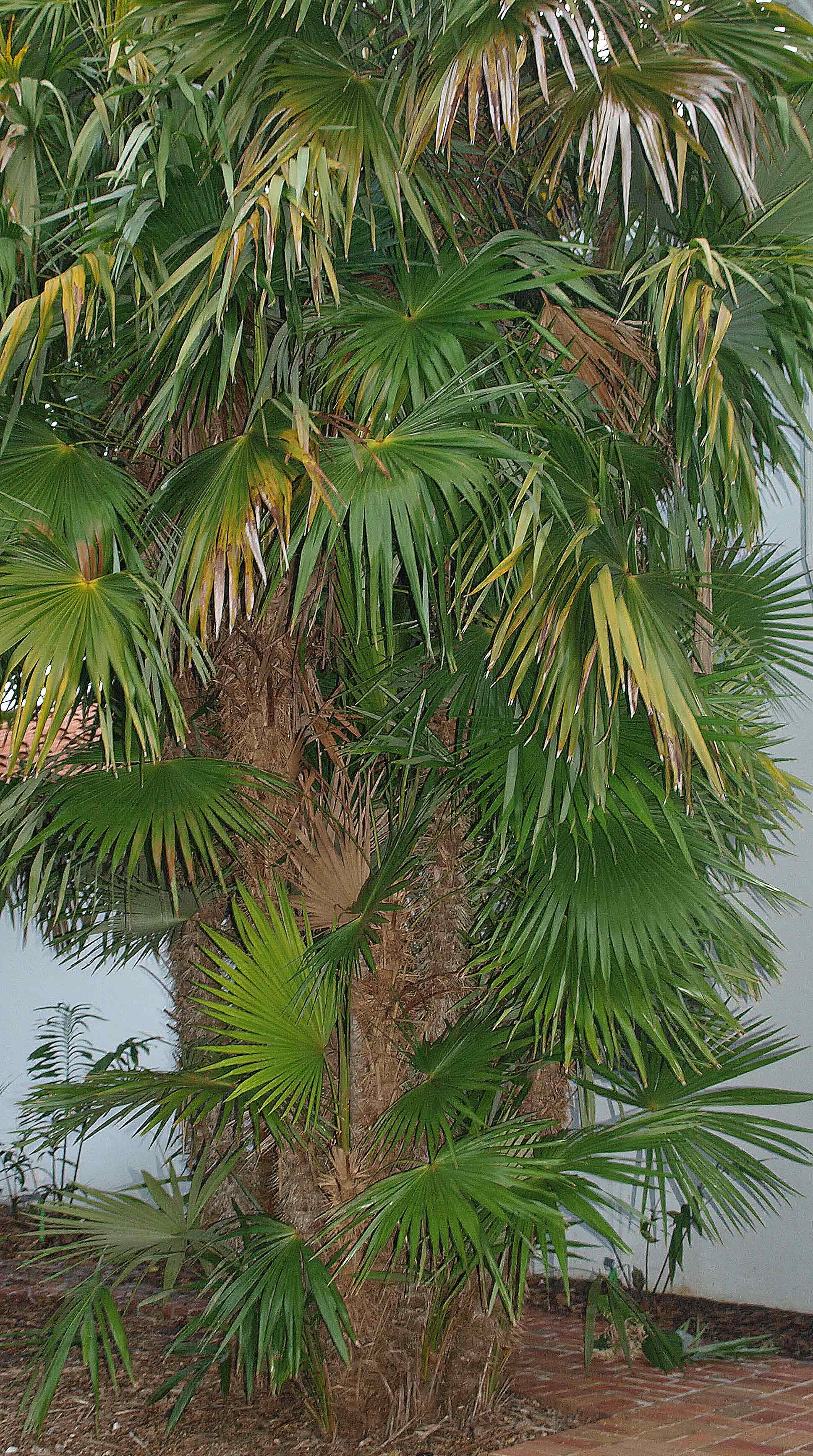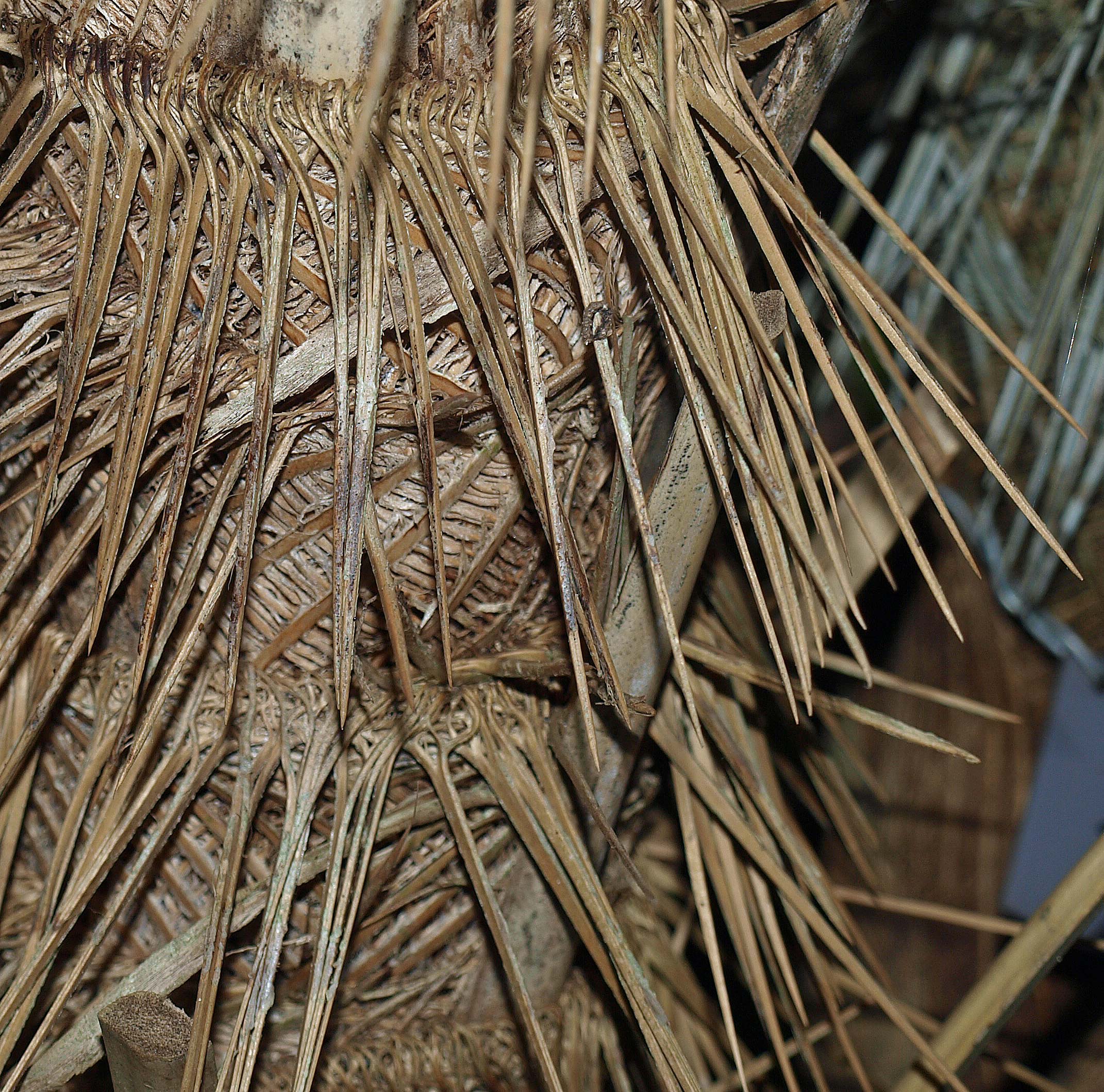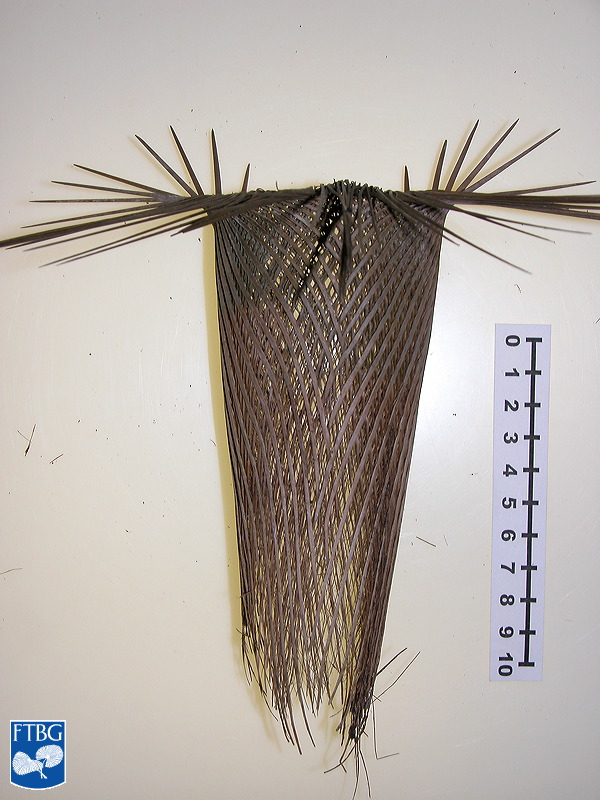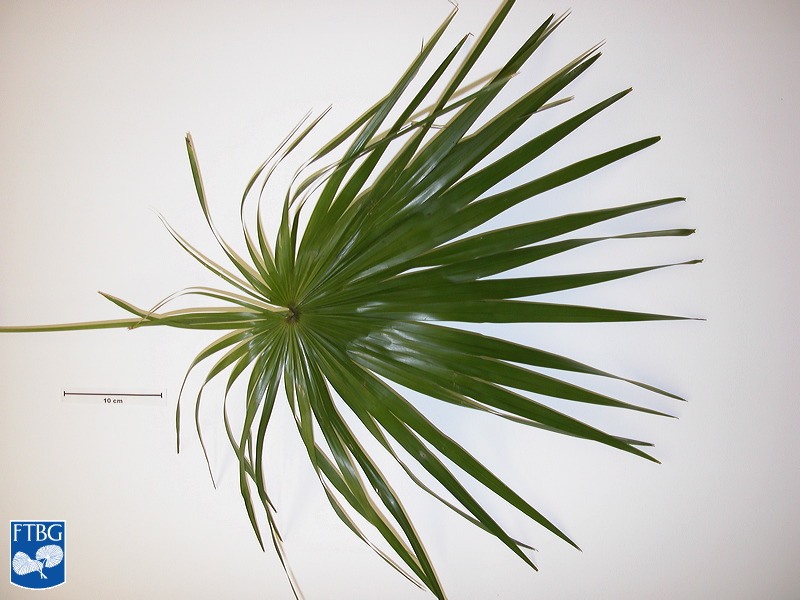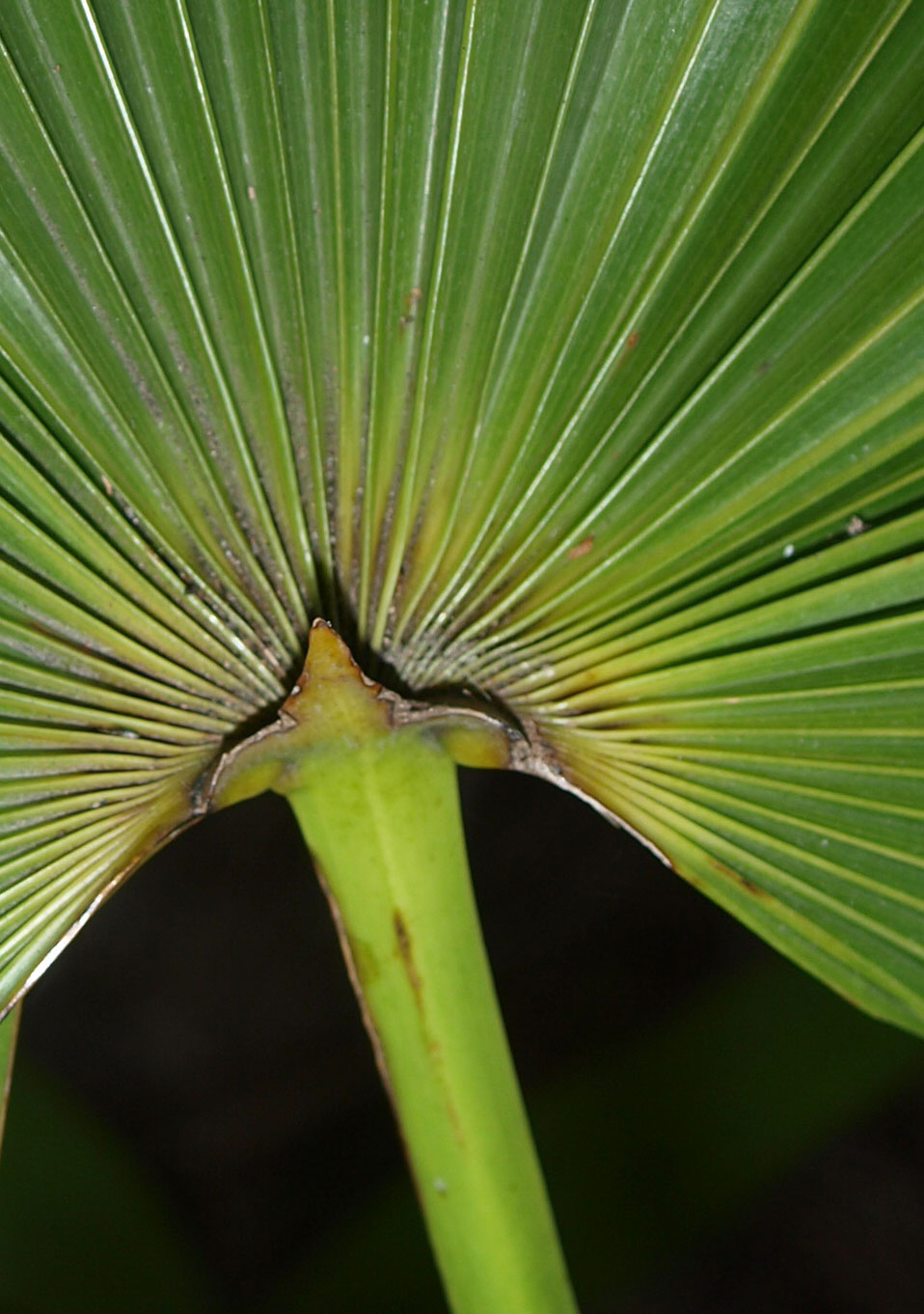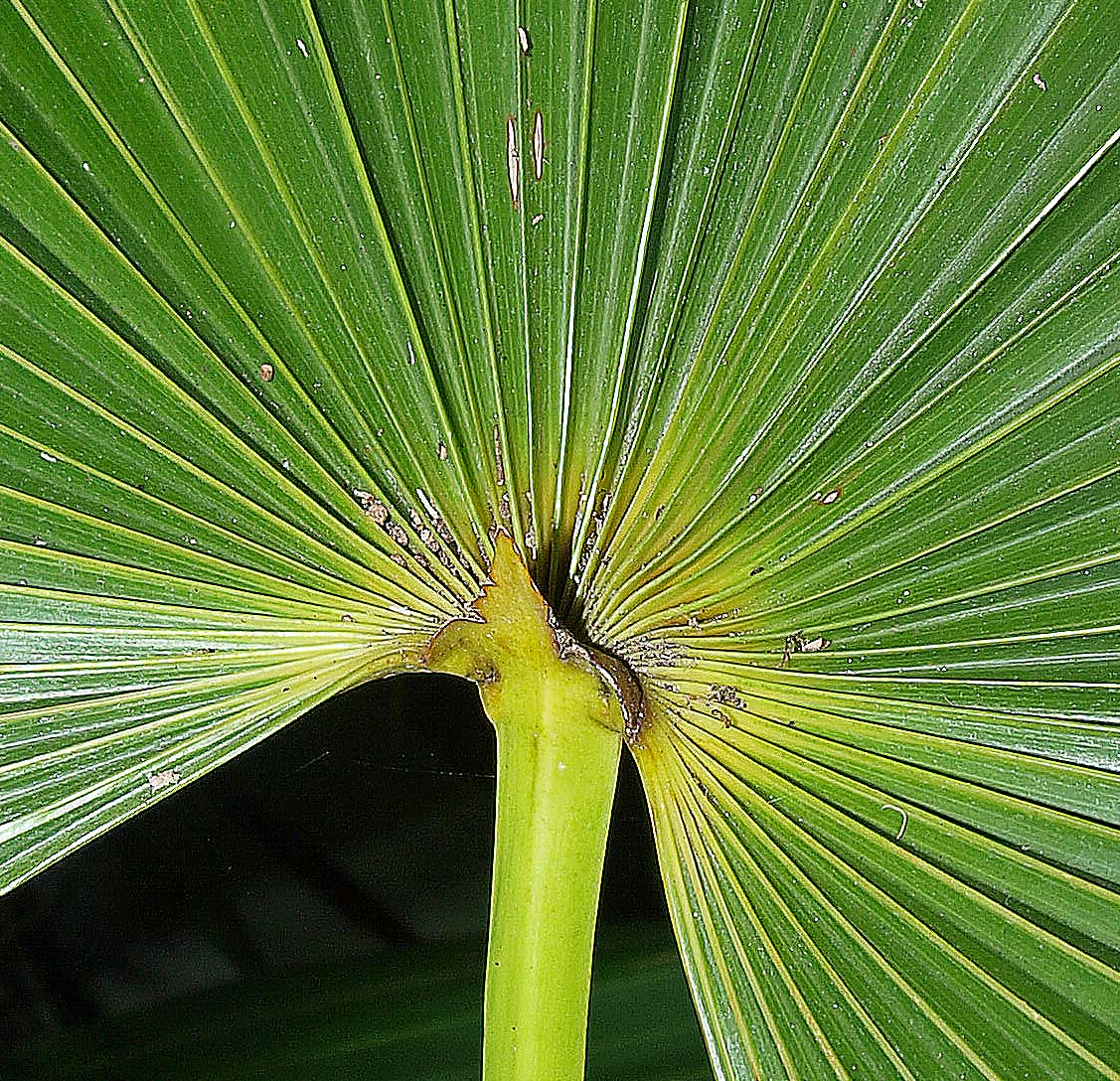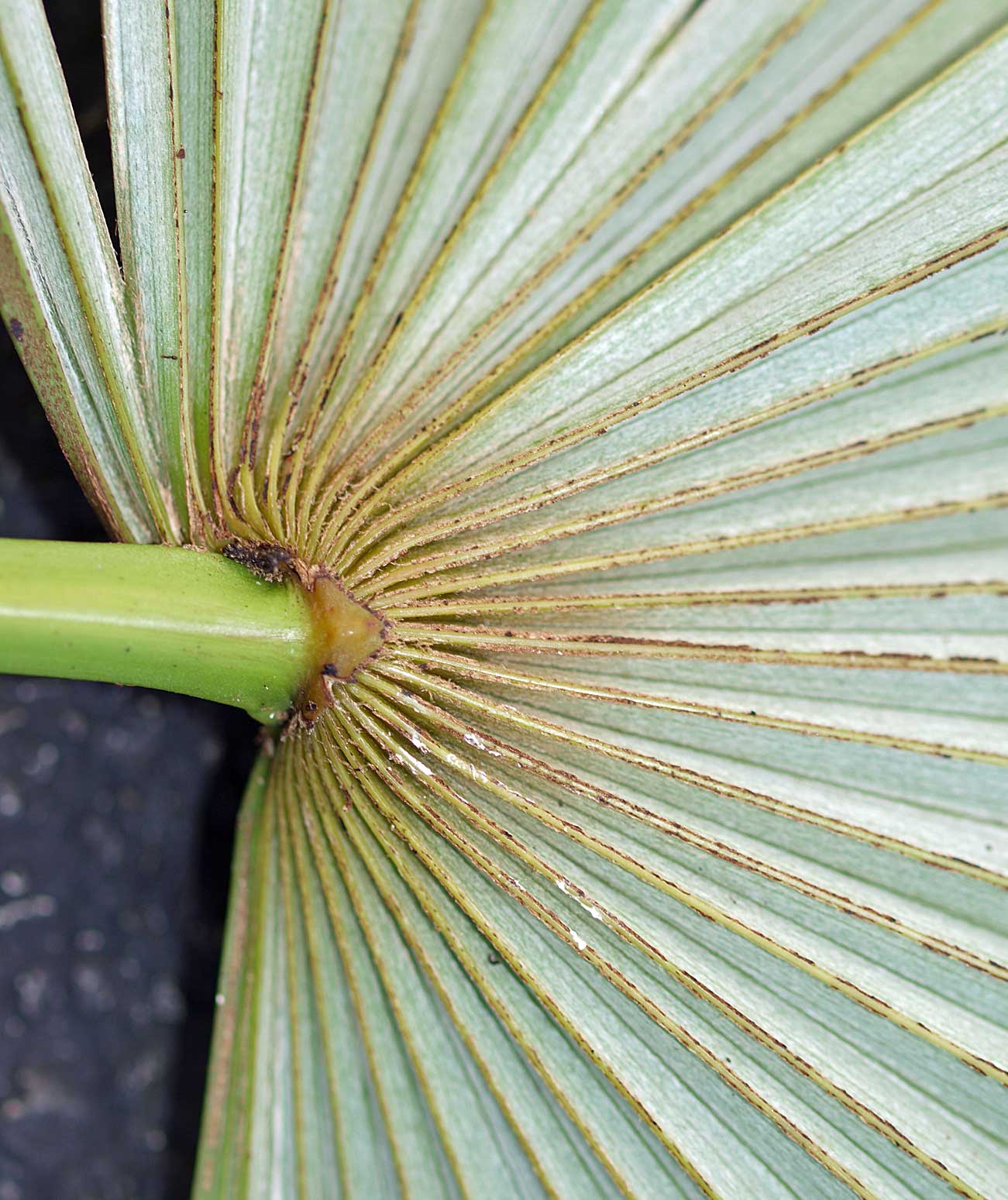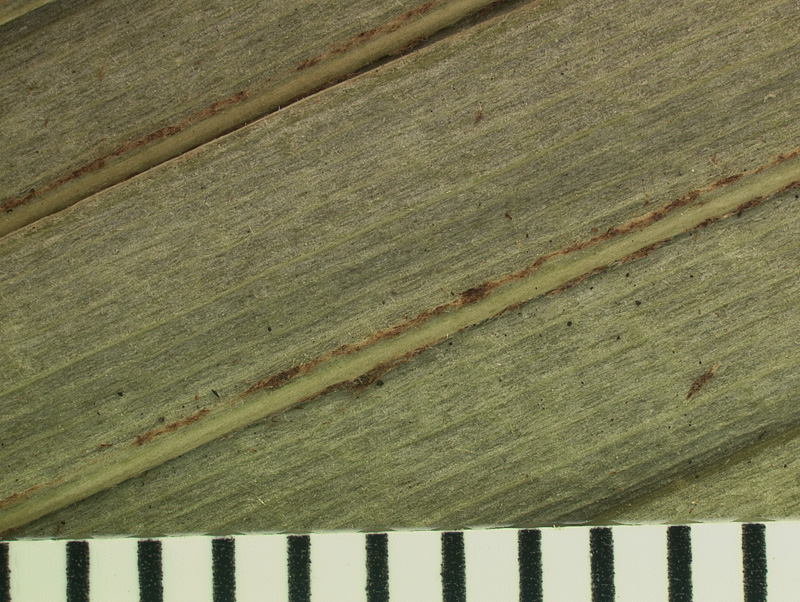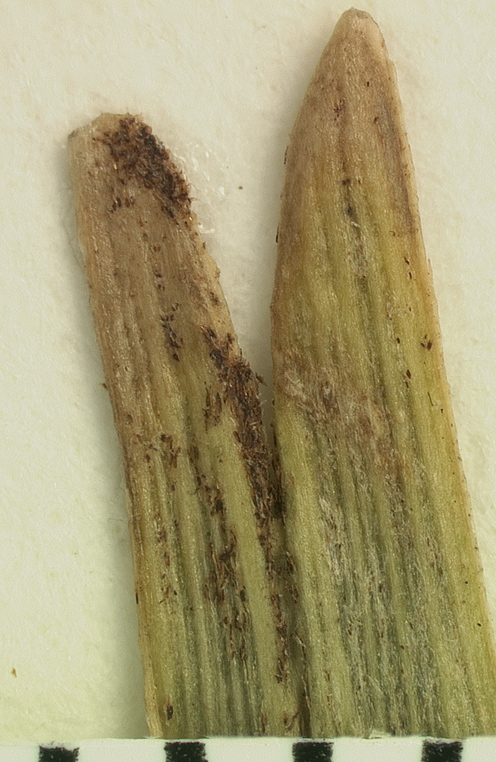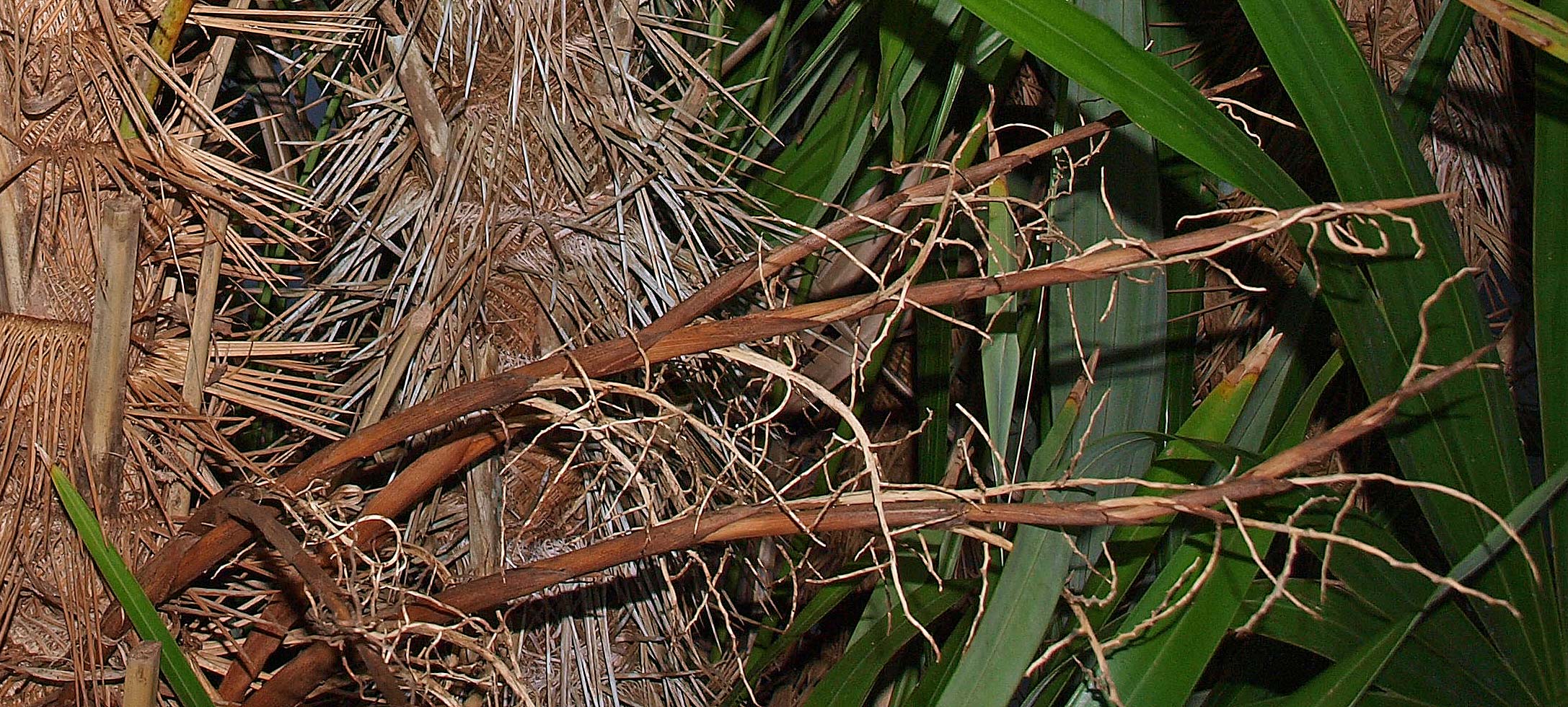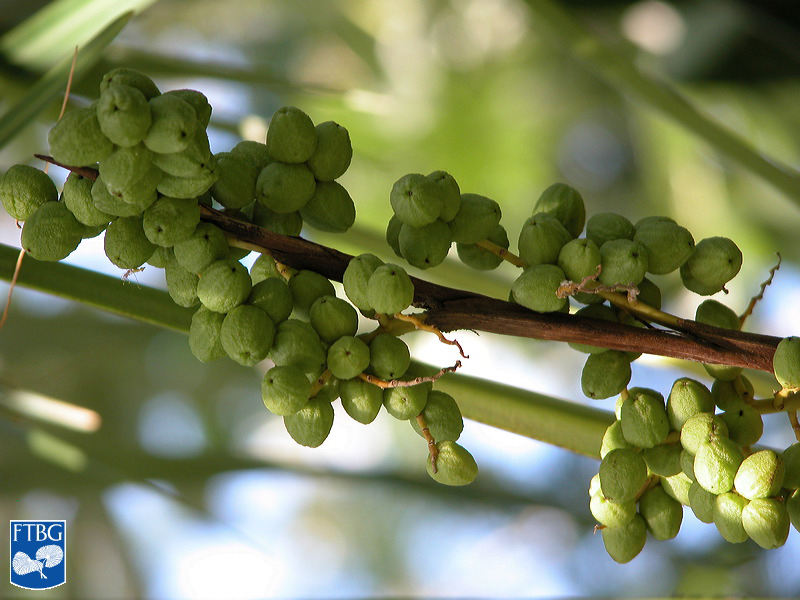Zombia antillarum
|
Zombia antillarum habit |
|
Zombia antillarum stem with spines |
|
Zombia antillarum fibrous leaf sheath. Photograph courtesy of Fairchild Tropical Botanical Garden, Guide to Palms http://palmguide.org/index.php |
|
Zombia antillarum leaf blade. Photograph courtesy of Fairchild Tropical Botanical Garden, Guide to Palms http://palmguide.org/index.php |
|
Zombia antillarum hastula (abaxial leaf blade) |
|
Zombia antillarum hastula (adaxial leaf blade) |
|
Zombia antillarum adaxial hastula (side view) |
|
Zombia antillarum silvery scales on abaxial leaf blade |
|
Zombia antillarum close view of abaxial leaf segment (mm scale) |
|
Zombia antillarum leaflet tip |
|
Zombia antillarum old inflorescence |
|
Zombia antillarum fruit. Photograph courtesy of Fairchild Tropical Botanical Garden, Guide to Palms http://palmguide.org/index.php |
Common name
zombie palm
Description
Stems: Clustering, upright stems to 3 m tall and 5 cm in diameter, covered with stout, burlap-like leafleaf:
in palms -- the leaf blade (which is usually divided into leaflets or leaf segments), the petiole (or leaf stalk) and the sheath (which forms the attachment of the leaf to the stem)
bases ringed with downturned, spiny, reticulate fibers. Leaves: Palmatepalmate:
like the palm of a hand; fan palms have palmate leaves that are usually divided into leaf segments arising from a central point, although a fan palm may have entire leaves (e.g., <em>Licuala grandis</em>)
, induplicateinduplicate:
Most palm leaflets or leaf segments are obviously folded. If the folds create a V-shape, with the midrib lower than the margins (so that rain might fall "into a valley"), the folding is induplicate.
, to 90 cm wide, with blade divided more than half its length by numerous, lanceolatelanceolate:
term to describe leaves and leaflets that are longer than wide and widest below the mid-point; lance-shaped
segments. Upper leafleaf:
in palms -- the leaf blade (which is usually divided into leaflets or leaf segments), the petiole (or leaf stalk) and the sheath (which forms the attachment of the leaf to the stem)
surface, bright green; undersurface, grayish white to silver with a prominent midrib; leafleaf:
in palms -- the leaf blade (which is usually divided into leaflets or leaf segments), the petiole (or leaf stalk) and the sheath (which forms the attachment of the leaf to the stem)
tips, slightly drooping and bifidbifid:
deeply cleft into two usually equal parts or two-lobed from the apex; for example, palms with bifid leaves or leaflet tips (e.g., <em>Chamaedorea metallica</em> has bifid leaves)
for 1 cm or less. The slender petiole has no spines or teeth and is not split at the base; the hastulahastula:
a flange or collar-like flap of tissue extending from the petiole where a palmate leaf blade joins it; often seen on the upper (adaxial) surface, but may also be found on the lower (abaxial) surface in some palms
has three points (trident-like). Flowers and fruits: Inflorescences are branched to two orders and are shorter than the leaves. Flowers are small, creamy white and bisexual. Fruits are spherical to oblong, 1.5-2 cm in diameter, and white when ripe.
Diagnostic features
Field: Erect, fan palms with stems covered by a layer of spiny fibers with long, pendulous tips.
Lab: Brownish hairs along ribs.
May be confused with
Possibly Thrinax or Coccothrinax species but neither has the distinctive rings of spines found on the Zombia stem.
Distribution
Native to Hispanola
Additional comments
Cultivated occasionally for its attractive foliage and interesting spines (and name)
Scientific name
Zombia antillarum (Desc.) L.H.Bailey
Family
Arecaceae/Palmae
Synonyms
Chamaerops antillarum Desc.
Coccothrinax anomala Becc.
Oothrinax anomala (Becc.) O.F.Cook


